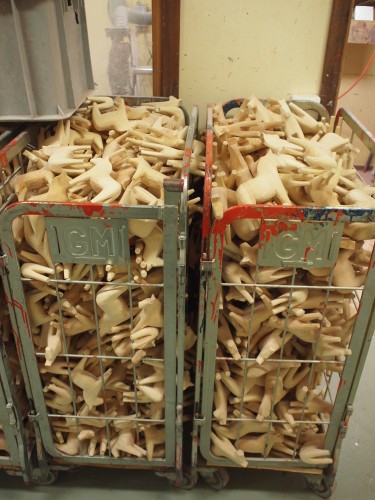Det här inlägget finns även att läsa på svenska, här.
Just how exciting is linked open heritage data, really? What’s the point – so what? Do normal people really care about unintelligible RDF data claiming to describe a rune-stone from Östergötland?
Information which is “open“ should be unfiltered, of high quality, and may be freely used and re-used by anyone. “Linked data“ is a standardised method for describing connections between tangible and intangible things and phenomena in such a way that how they relate to one another can be understood by machines.
So how does this apply to the information in databases held by cultural heritage organisations? One example is the raw information published through SOCH. It’s not particularly accessible for most people because it’s predominantly written by and for experts; that is, people who can interpret and understand it. But at the same time, raw information constitutes the foundations of our ability to develop knowledge. And as a result of new possibilities and requirements it can also be used to benefit users other than experts, for example by using it as a basis upon which to create apps, websites, and more.
Nowadays the goal is to ensure that “our“ information can be used for things other than simply managing “our“ own collections. If carefully managed, digital information can be used in a great many different ways in a broad variety of contexts. Just as wood can be used as the raw material for building a house, carving a Dala horse, or making matches, so linked open heritage data constitutes the digital raw material for everything from monuments apps, to research platforms, to games, and websites for all manner of different users.


Cultural heritage information can – if one so chooses – be described in a consistent, structured, generalised manner. If one furthermore chooses to relate these digital objects to one another, the resulting possibilities for information reuse become practically endless. If the data is also openly licensed, it becomes linked open data.
But does this really happen? Aren’t the benefits promised by linked open data just wishful thinking? No! In fact there are already lots of exciting applications using open heritage data which demonstrate just how multifaceted it can be. Here are just a few recent examples:
- Project Andvari is an American initiative which aims to create a resource for researchers, based around monuments and artefacts from early medieval Europe, with a particular focus on their iconography. The project needs to be able to aggregate information from  a number of different sources across multiple countries. In this case they’ll be making use of SOCH, the British Museum and the PAS’ digital collections, and augmenting them with their own descriptions based on shared vocabularies in order to facilitate research goals. Other existing information sources will also be used, by aligning data with the open digital gazeteer for period definitions PeriodO and making use of the crowdsourcing platform MicroPasts. The project is a collaborative effort between researchers based at the University of Virginia, Catholic University of America, and the University of Mississippi. (I have previously written about Andvari here.)
- Platsminnen is an app-based platform which uses images, stories, and local history from Platsr and SOCH – among others – to work with remembrance and memory training within geriatric care, particularly for those with dementia.
- Combining the school curriculum and linked open data is the premise of Axiell, which uses linked data from SOCH and other sources to link cultural heritage objects to the curriculum in a way that makes them easier to use during lessons.
All of these applications are built upon the same underlying data from SOCH.
When we launched SOCH six years ago, we had no real idea of exactly how its data would be used. In fact, we were heavily reliant on the prior experience of others, and mostly just hoped that interesting things would happen with the data. And now, they are – the most unexpected things!
It’s important to emphasise that the examples given above have come about without any involvement on our part as custodians of the data in SOCH: the initiative has not come from us, we have not spent any time on development or any money investing in these applications. Â They have arisen where there was a need and the opportunity for innovation from third-parties. We provide the raw materials – the linked open data, data described in a structured and generalised way – and the users make what they wish from it.
If you’re a Swedish cultural heritage organisation which lacks the resources to create an environment in which your collections can be used, researched, and appreciated by young and old alike without having to do any of the work yourselves, SOCH might be the solution you’re looking for: http://www.k-samsok.se/om-k-samsok/att-leverera-data/
SOCH contributes to the Swedish National Heritage Board’s mission to “ensure that cultural heritage is preserved, used, and developed“ and is open for all!